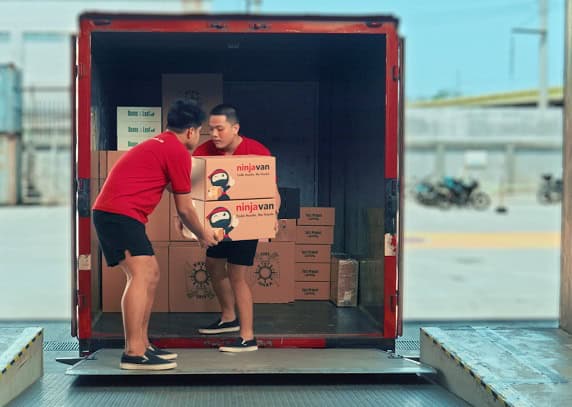Proper restock management ensures that you have the right products available at the right time to meet customer demand. This is crucial for maintaining sales momentum and customer satisfaction.
However, many small to medium enterprises struggle with optimizing their restock processes, leading to various challenges that directly impact revenue and customer experience.
Learn the warning signs that your restock system might be hurting your sales, and find out how you can optimize your restocking process.
Also read: How to Deal with Slow Moving Inventory
6 factors to consider when restocking
Before we got to the warning signs, let’s first understand the key factors SMEs should consider for restock management:
1. Demand
Understanding customer demand is crucial to determine when and how much to restock. For example, if you own a start-up bakeshop, you may notice that sales spike every weekend. Anticipating this trend, you can plan to stock on more baking ingredients on Fridays to meet the weekend demand.
Additionally, keep an eye on seasonal trends — like preparing more cake flavors during special occasions.
2. Lead Time
This is the time it takes to deliver new stock after an order is placed. If you run a retail store and your supplier takes two weeks to deliver new stocks, you need to plan your orders well in advance to avoid stocking out on popular items.
This means closely monitoring inventory levels, ordering and delivering items to your stores before you hit a critical low point.
3. Storage
Balancing stock levels with available storage space is important to avoid understocking. On the other hand, overstocking can mean paying more for storage space and tying up your cash flow.
Plan your stocking and deliveries well for better inventory management.

4. Seasonality
Many products experience a surge in demand based on seasons or trends. Let’s say you run a clothing boutique. During the cooler months, you might see a higher demand for jackets and sweaters. Conversely, in the summer, lighter clothing and accessories might sell better.
Adjusting your restocking strategy to account for these seasonal changes ensures you always have what your customers are looking for.
5. Returns volume
Factor in product returns when calculating restock quantities. If you’re selling home items, you might notice that certain products, like fragile decor pieces, have higher return rates due to damage during storage or transport.
By accounting for these returns in your restocking plans, you can maintain balanced inventory levels and manage cash flow more effectively. Ensuring secure packaging and safe transport of your goods can help reduce the volume of returns.
6. Supplier reliability
Assessing the reliability of your suppliers is vital for maintaining a smooth restocking schedule.For instance, if you run a restaurant and rely on a specific supplier for fresh seafood, any delays or quality issues from the supplier can disrupt your kitchen operations and disappoint your customers.
Building strong relationships with suppliers and having backups can mitigate these risks. Regularly communicating with suppliers and setting clear expectations about lead times and quality standards are crucial for maintaining smooth operations.
7 red flags your restock system might be hurting your sales
Now that we’ve covered the key factors, let’s look at the restocking nightmares to avoid:
1. Frequent stockouts
If you find yourself constantly running out of popular products, it’s a clear sign that your restock system needs improvement. Stockouts lead to lost sales and frustrated customers who may turn to your competitors.
2. Excess inventory
On the flip side, having too much stock can tie up valuable capital and warehouse space. Excess inventory increases the risk of wastage that can lead to financial losses if products don’t sell as expected.
3. Inefficient order processing
Delays in processing orders due to stock shortages or inaccuracies can lead to customer dissatisfaction and lost sales opportunities. Have an efficient inventory management system in place to track your stocks properly.
4. Increased customer complaints
Rising complaints about product unavailability, incorrect orders, or delayed deliveries are indicative of restocking issues. Negative feedback can damage your brand’s reputation and lead to bad reviews.

5. High storage costs
If you’re spending a significant portion of your budget on warehouse storage fees, it’s time to reassess your restocking strategy. You can lower your storage expenses and free up money for other company needs by managing your inventory more effectively.
6. High delivery costs
Poor restock planning results in rush deliveries and expedited transport costs. To avoid this, regularly monitor your stocks to consolidate orders and schedule regular deliveries.
Also, looking for an alternative mode of transport, like pay-per-space deliveries allows you smaller but frequent drop-offs to your store locations so you don’t have to rent expensive trucks or traditional delivery services.
7. Sales fluctuations
Inconsistent sales patterns or unpredictable demand signals a lack of alignment between your restocking efforts and customer needs.
Analyze sales data regularly to identify trends and adjust your restock strategy accordingly.
EFFECTIVE restock management is crucial for driving sales growth and maintaining customer satisfaction. You may raise customer happiness, cut expenses, and boost profitability by identifying the telltale symptoms of an ineffective system and putting smart changes into place.
Reinvent your restock system with Ninja Restock
Reimagine your restocking and supply chain with Ninja Restock. There’s now a more flexible and cost-efficient way to deliver your goods and inventory than relying on traditional trucking and cargo services.

Ninja Restock introduces a pay-per-space logistics solution that offers:
- Pickup and delivery from your supplier to your warehouse
- Restocking items from your warehouse to multiple locations
- Pickup and restocking your items from one store to another
No need to pay more for full truckload or less than truckload deliveries that’s not only expensive but slows down your supply chain. With Ninja Restock, you can schedule smaller but frequent deliveries to ensure stock sufficiency whether you run retail stores, food and beverage companies, franchising or distributorship.
Avoid over and understocking, deliver your stocks faster and cut your restocking costs.
Get a free quote for Ninja Restock today!
More logistics solutions to boost your business:
What is CBM in Shipping?
Why You Need To A One-Stop Logistics Solution
6 Signs You Need to Outsource Your Order Fulfillment







